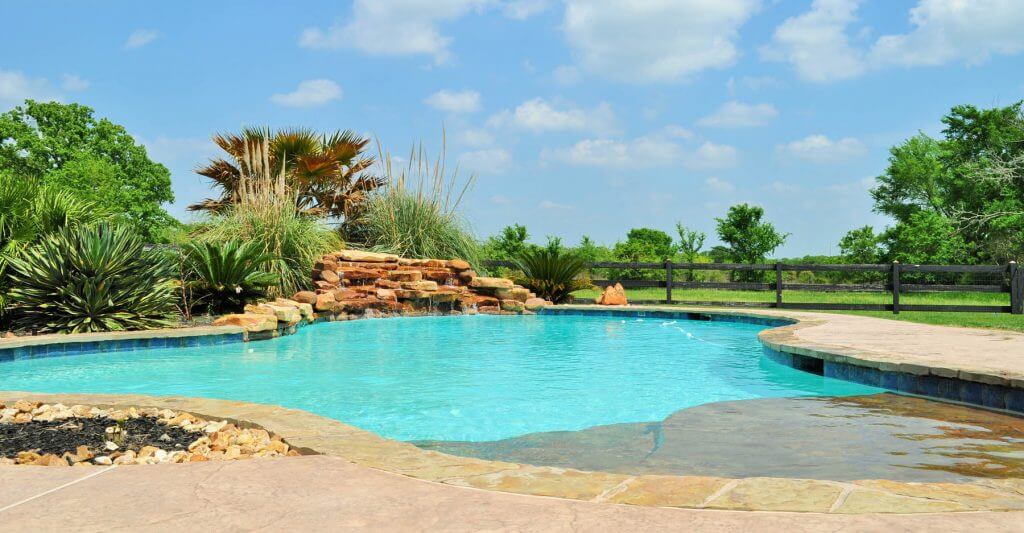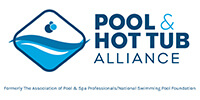Start Your Filters! Spring is Here!

03/21/2018 | Categories: Pool Maintenance
The warmer (ok, hot) weather will be in College Station soon and that means a lot more time spent in the swimming pool. So, before you ramp up use as the temperatures continue to rise, it is important that you follow these pool ownership tips to ensure the health and safety of your pool and its occupants.
Check the Swimming Pool Water Levels
Your water level should be halfway up the tile or around the middle of your skimmer opening. If you need to top your water off, get that garden hose working and fill up your pool.
Test the Chemistry of Your Pool
Run the circulation system for 24 hours or so before you test the chemistry of your pool. Your pool should be within the following ranges:
- Total Alkalinity (TA) – 80 to 120ppm
- pH – 7.4 to 7.6
- Chlorine – 2.0 to 4.0ppm
Adjust Your Chemistry as Necessary
You can largely control the levels of pH and chlorine in your pool by first adjusting its total alkalinity (TA).
- If your TA is too high, you can use dry acid (sodium bisulfate) to reduce levels to an acceptable range.
- If your TA is too low, you can use sodium bicarbonate to increase it.
You should wait at least 4 hours (or however it is otherwise recommended on the packaging label) after adding to retest your pool water.
Tackle the pH Balance and Calcium Hardness
When your TA is between 80 to 120ppm, you can begin adjusting your pH levels as necessary.
- If your pH is above 7.6, try adding dry acid (sodium bisulfate) or muriatic acid
- If your pH is below 7.2 use soda ash to bring it back to acceptable levels
Wait at least 4 hours for the pH level to settle. You can then test and adjust your calcium hardness so that it is above 150ppm. Calcium chloride can be used to increase the calcium hardness which will prevent pitting in your concrete, plaster and pebble tec.
Brush, Vacuum, and Filter
Once the chemistry has been adjusted, give your pool walls, floor, steps, ladders and other equipment a good brush down. Re-attach any other items which you may have removed (such as slides, basketball hoops, etc.). Vacuum the pool and run your filtration system overnight to eliminate any dirt, bacteria, debris and algae that may still be present.
Shock Your Pool
Whenever you add chlorine to your pool water, the chlorine molecules naturally attach themselves to algae, debris and other unwanted material. This forms what is known as a chloramine.
This “dead chlorine” should be removed from your pool. This is why it is usually recommended that you shock your pool before it really starts to heat up so your swimming pool will be ready for increased usage.
Follow these pool ownership tips to get your spring off to a good start. The better you take care of your pool now, the less maintenance and service you’ll need later.
ABOUT THE COMPANY
A properly designed swimming pool is a combination of artistry and skilled construction principles. Sunshine Fun Pools has been applying these skills for more than fourteen years and has built over one-thousand pools in the Brazos Valley and surrounding area. As evidence of this success, Sunshine Fun Pools has been recognized by Pool and Spa News as a Top 50 Builder. Our philosophy is to build the highest quality, lowest maintenance, most energy efficient swimming pool available. Our quality control goal is zero call backs. We accomplish this by including standard features on our pools that other companies do not. Our strategic partnerships with companies like Hayward Pool Equipment and A&A Manufacturing allow our pools to be priced as competitively as possible while allowing our clients the freedom from time-consuming maintenance.
Call the experts at Sunshine Fun Pools today to schedule your personal consultation.















